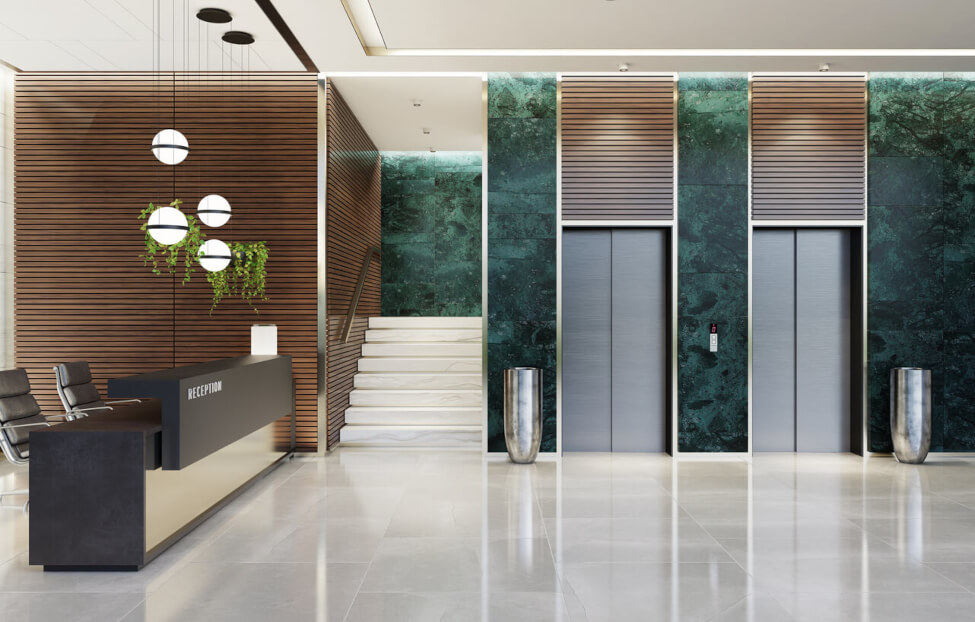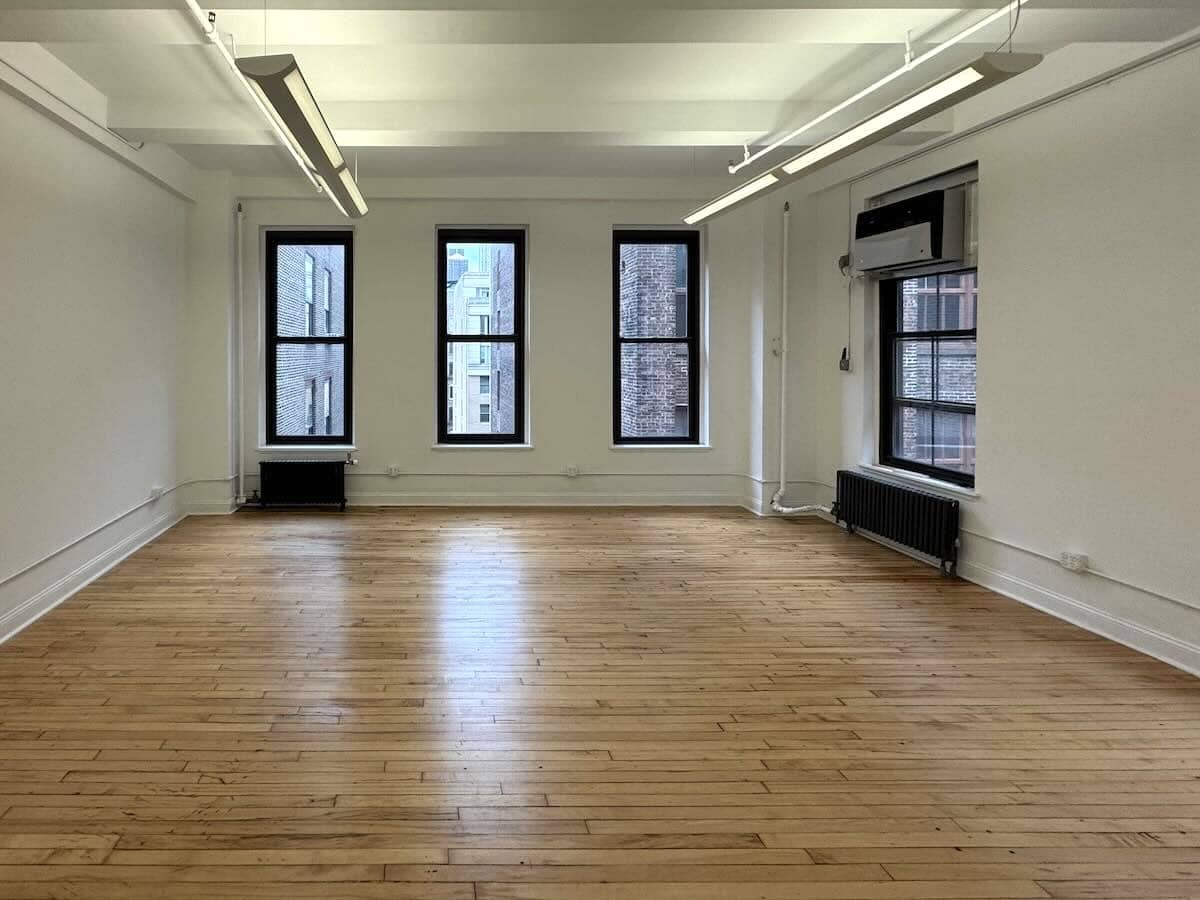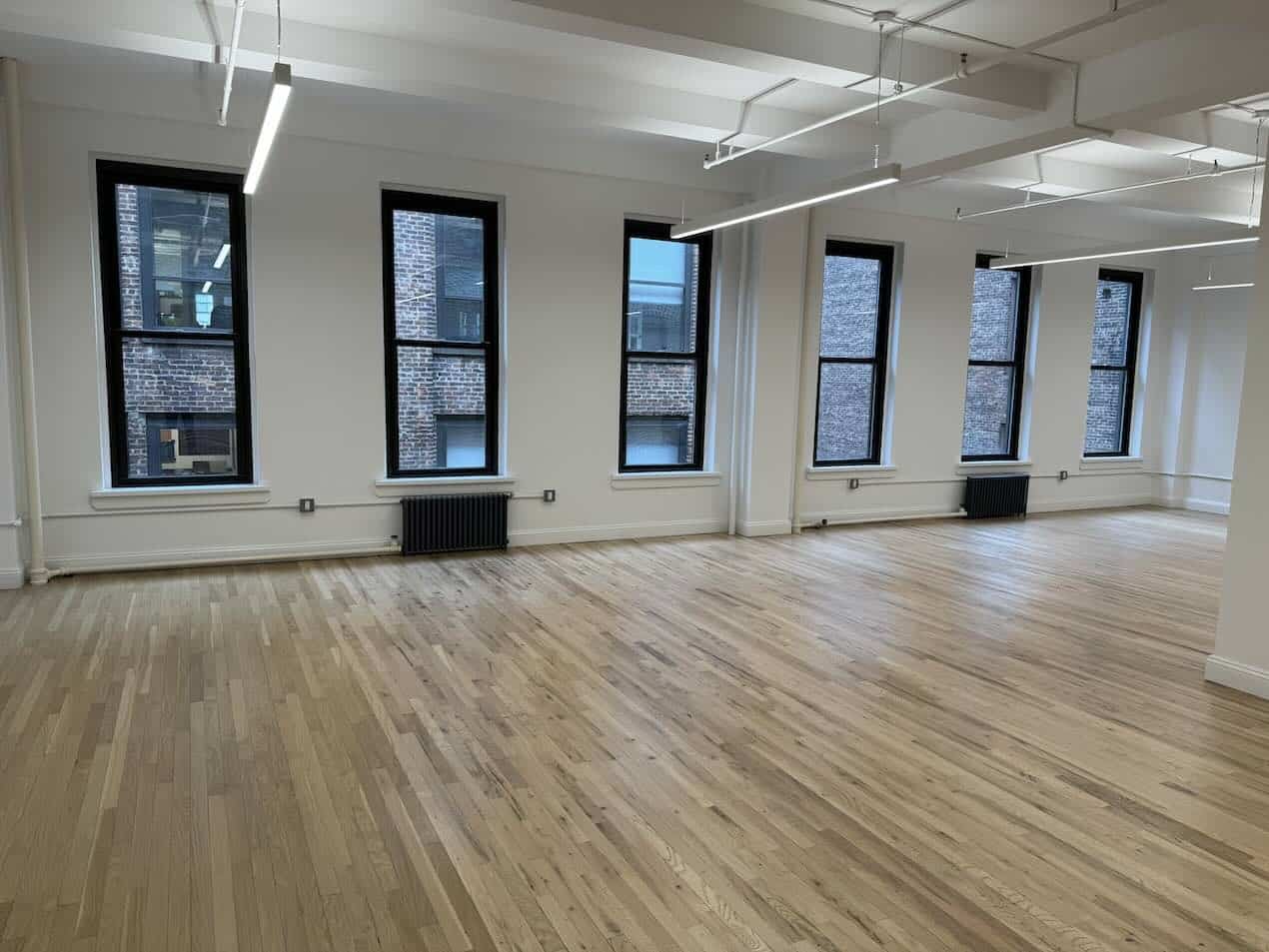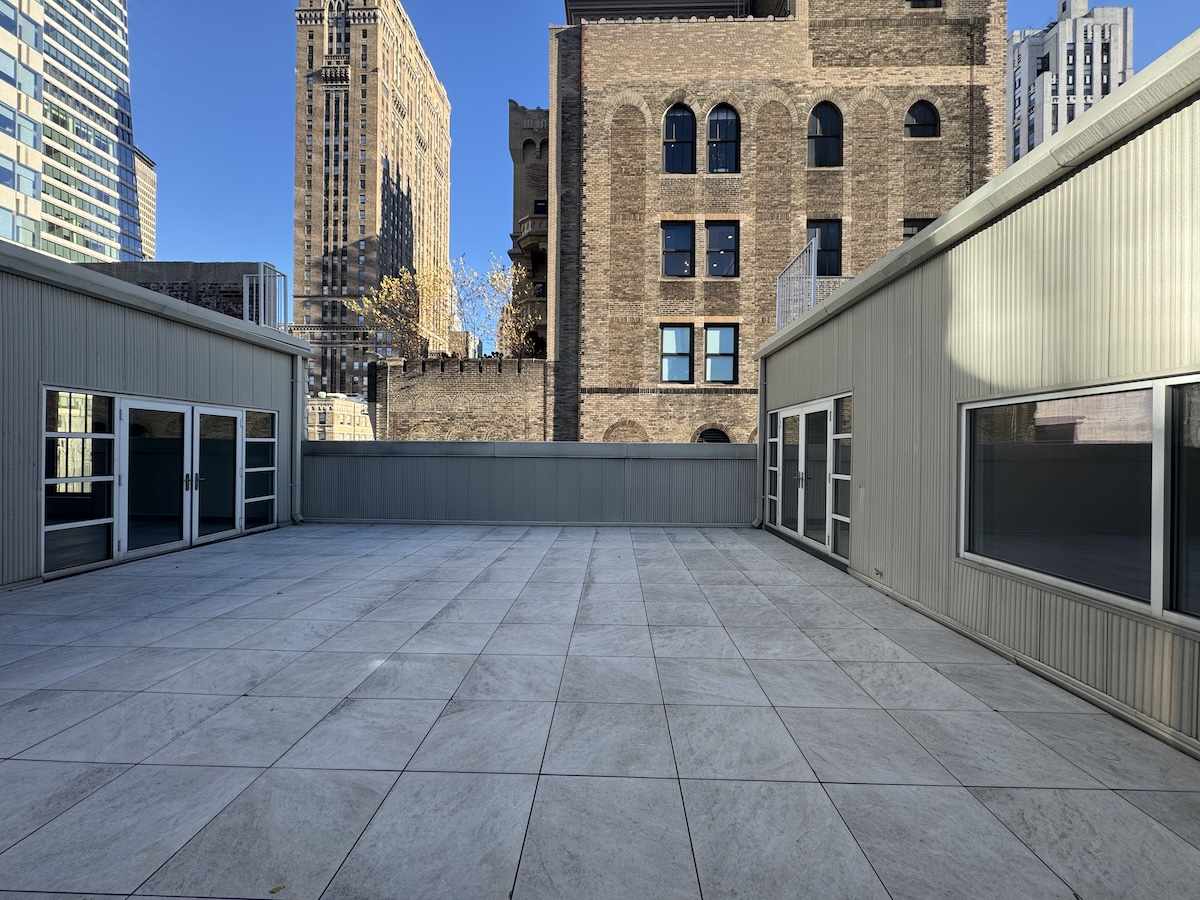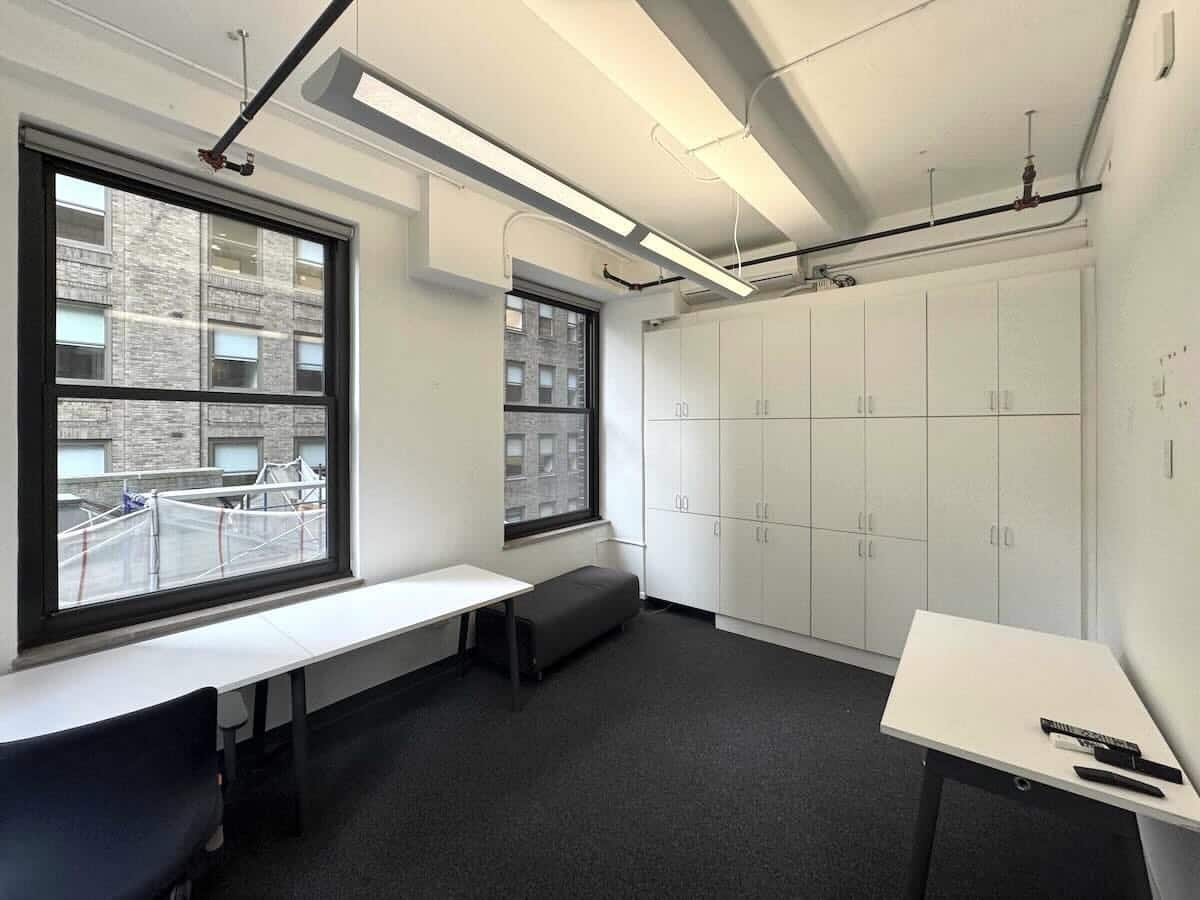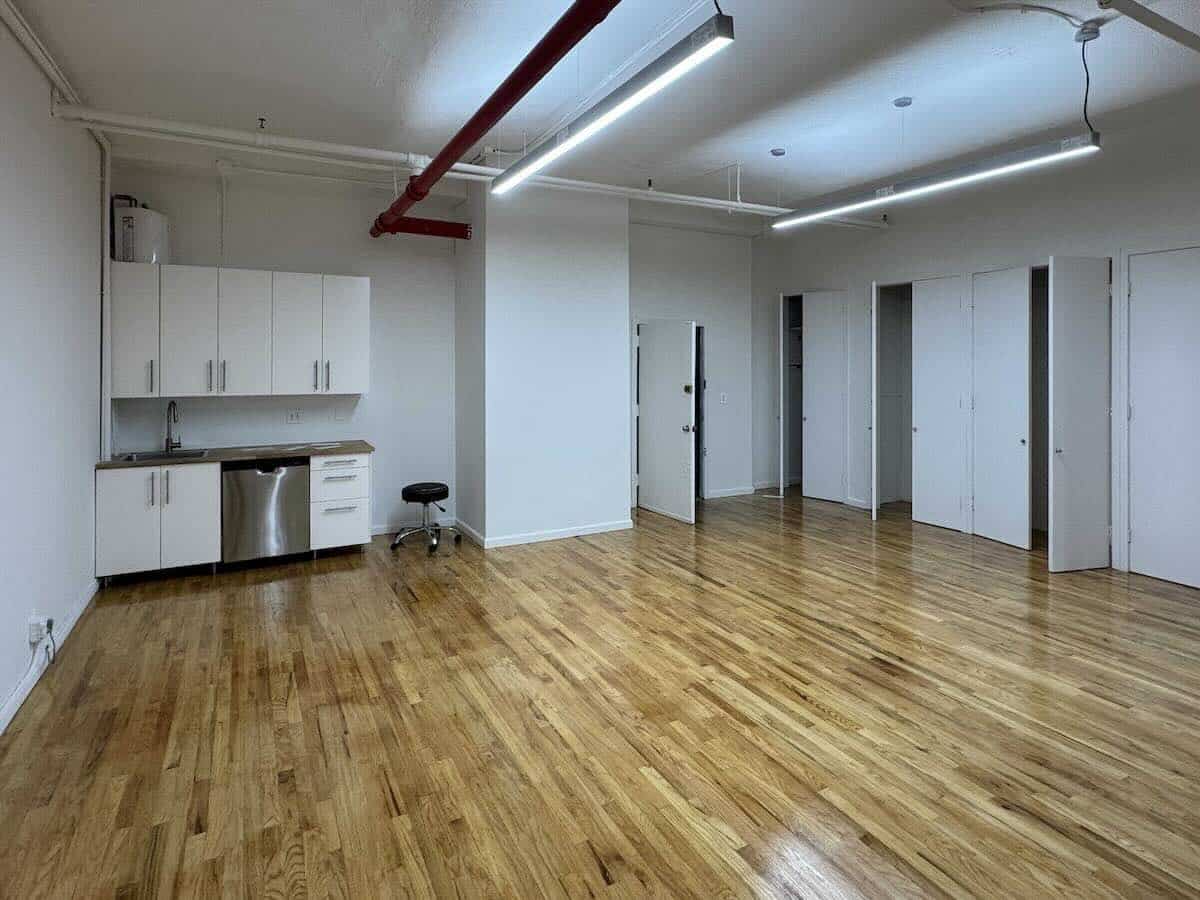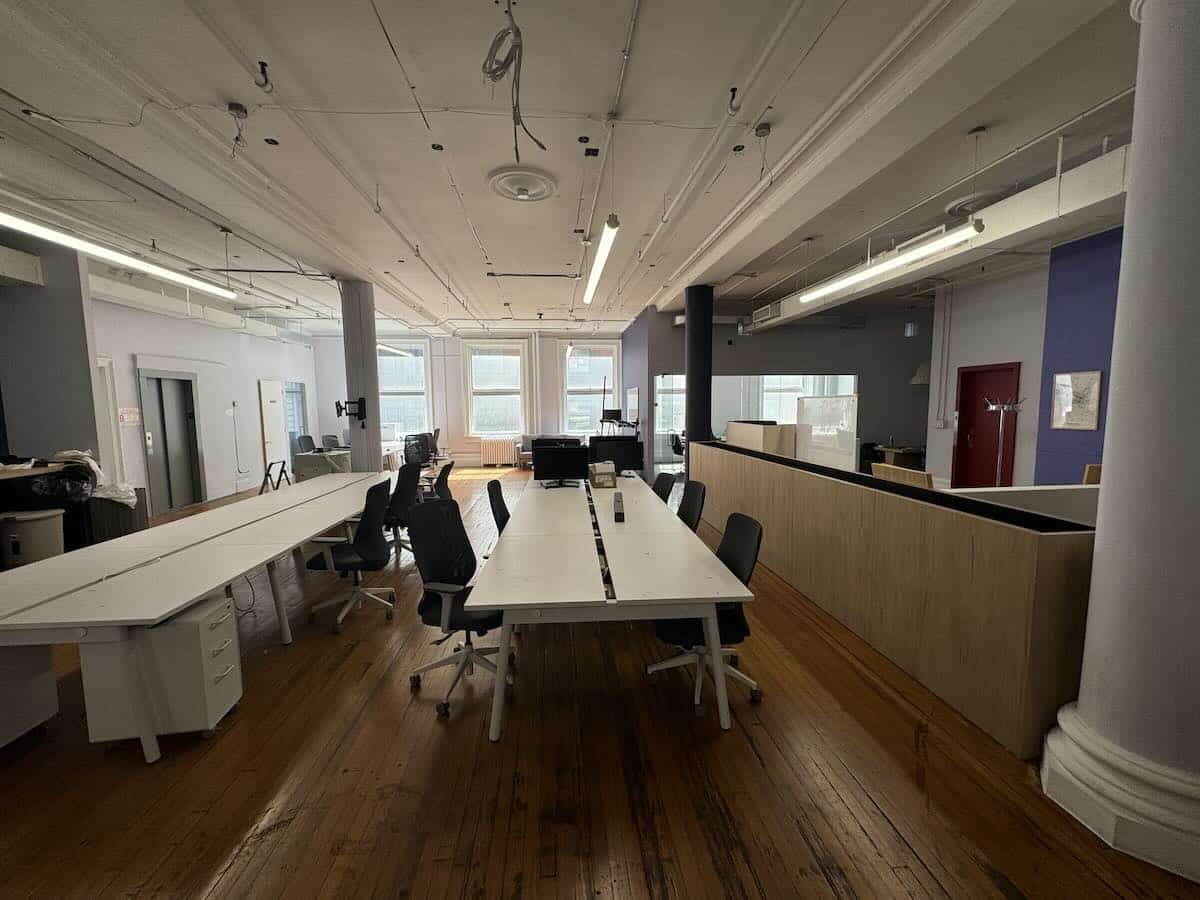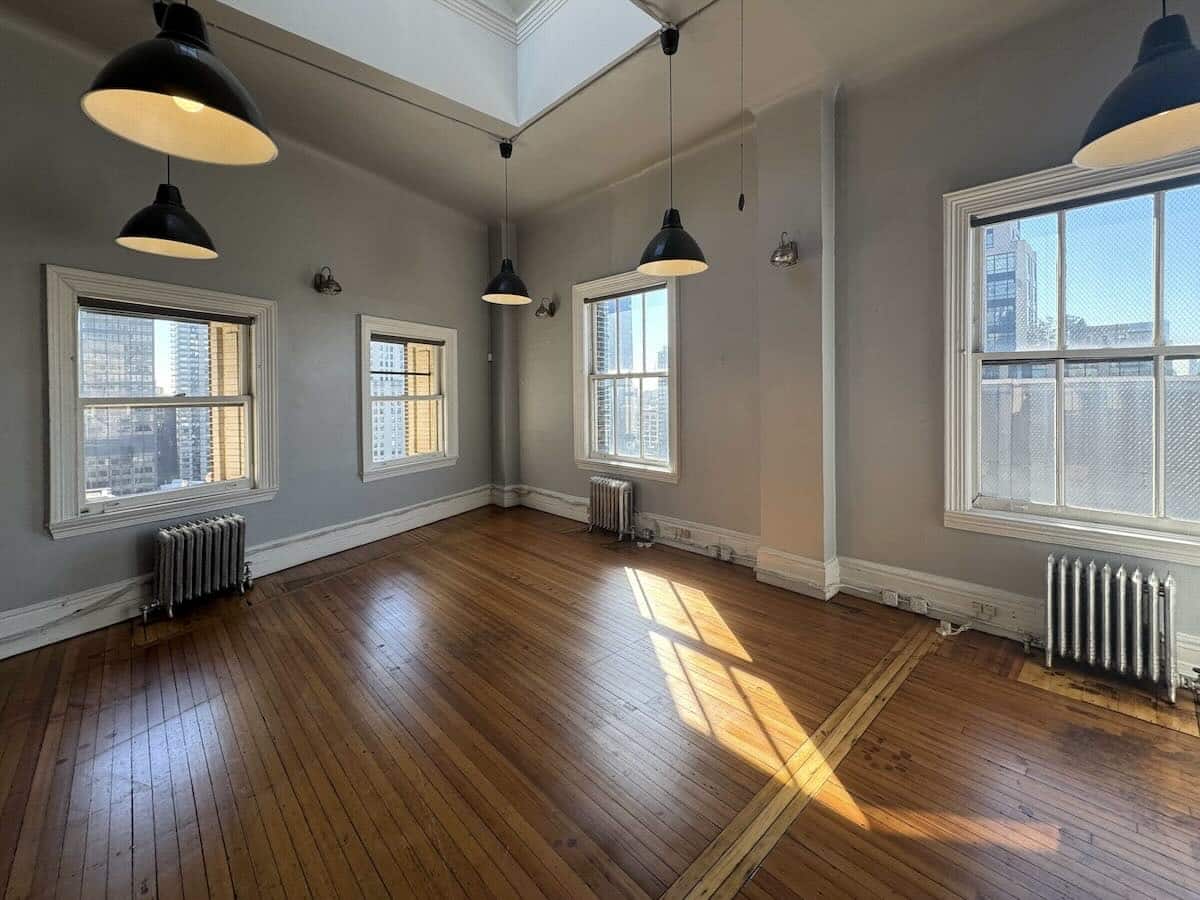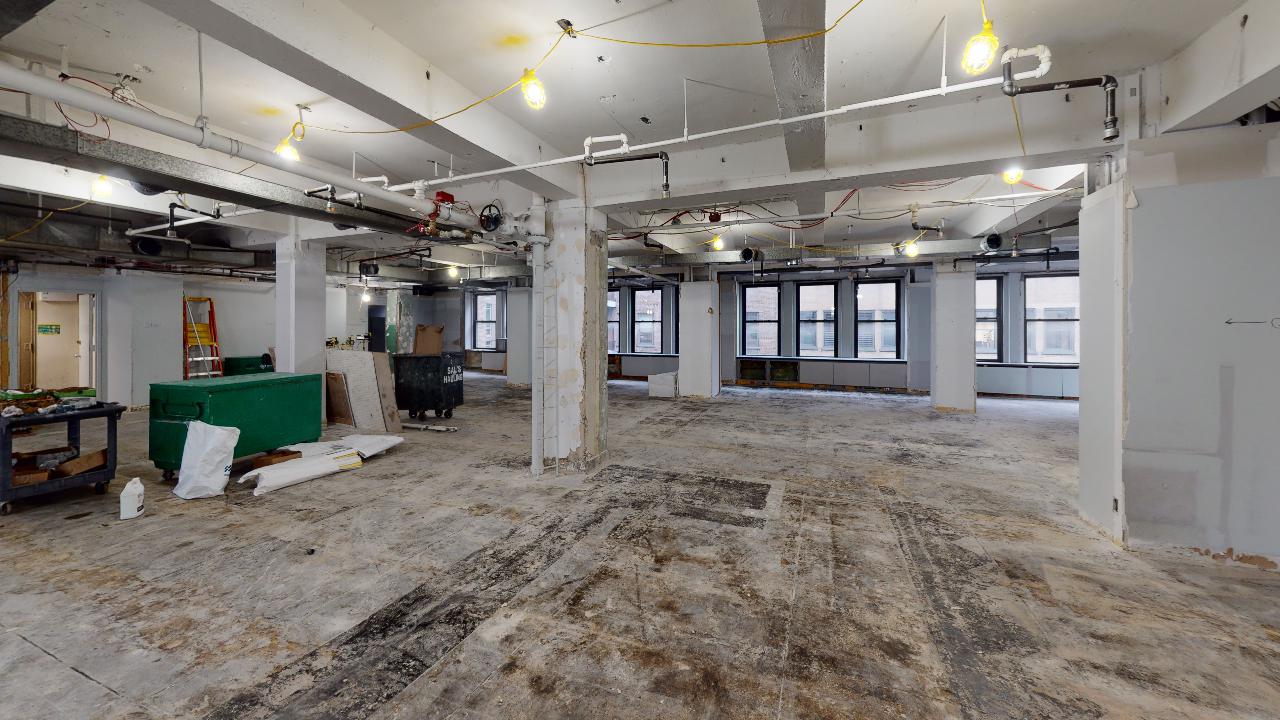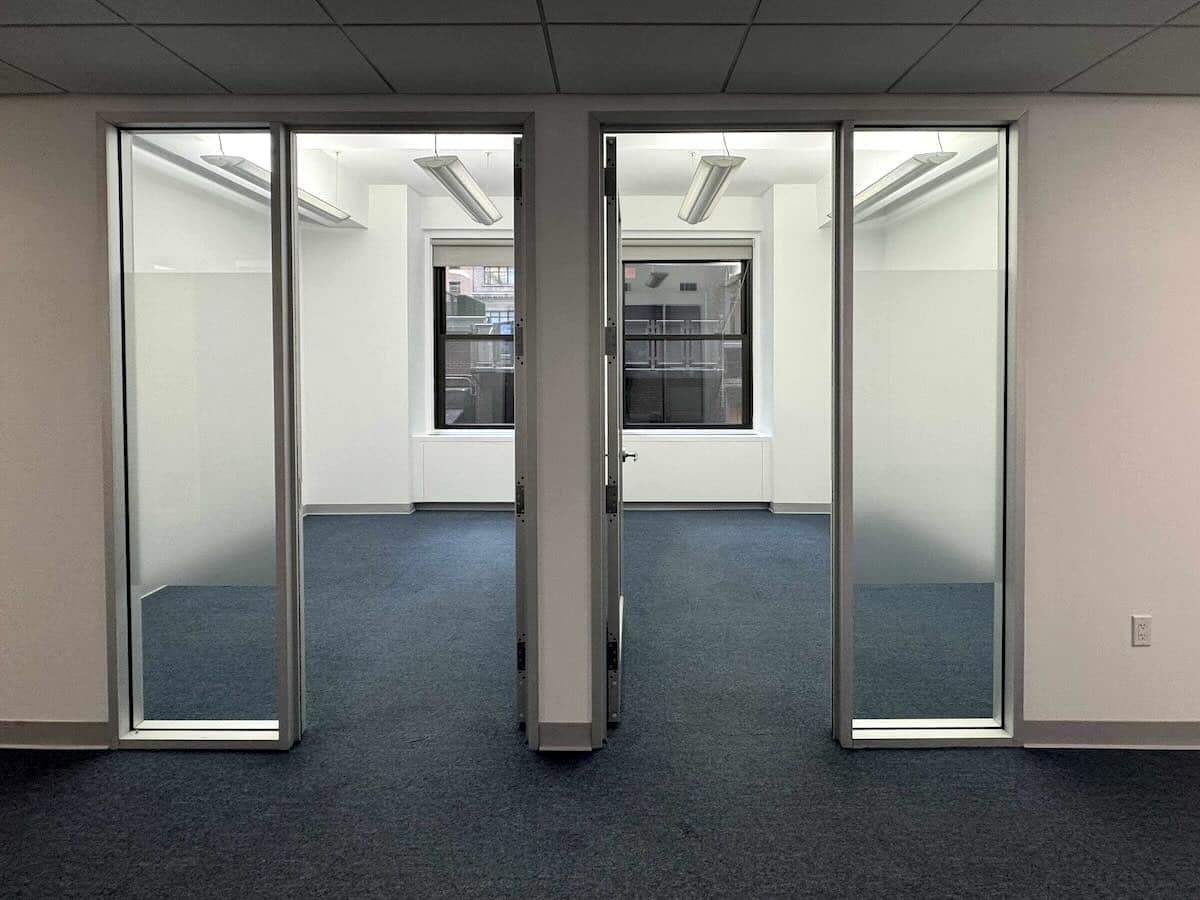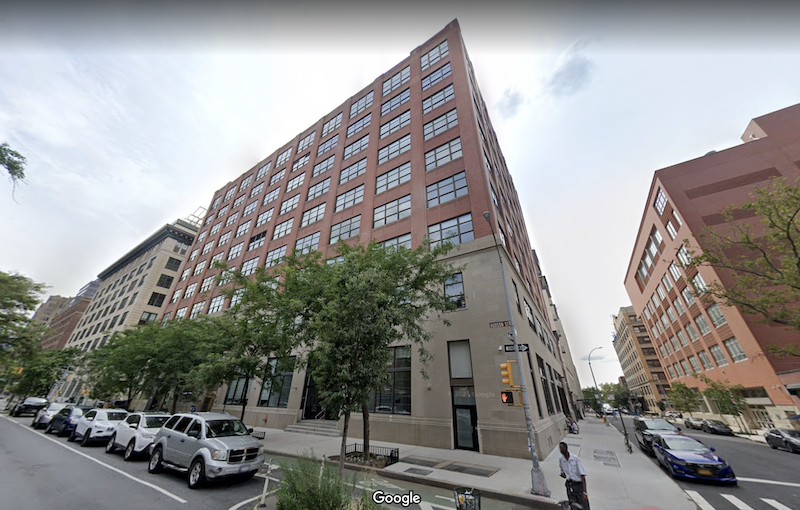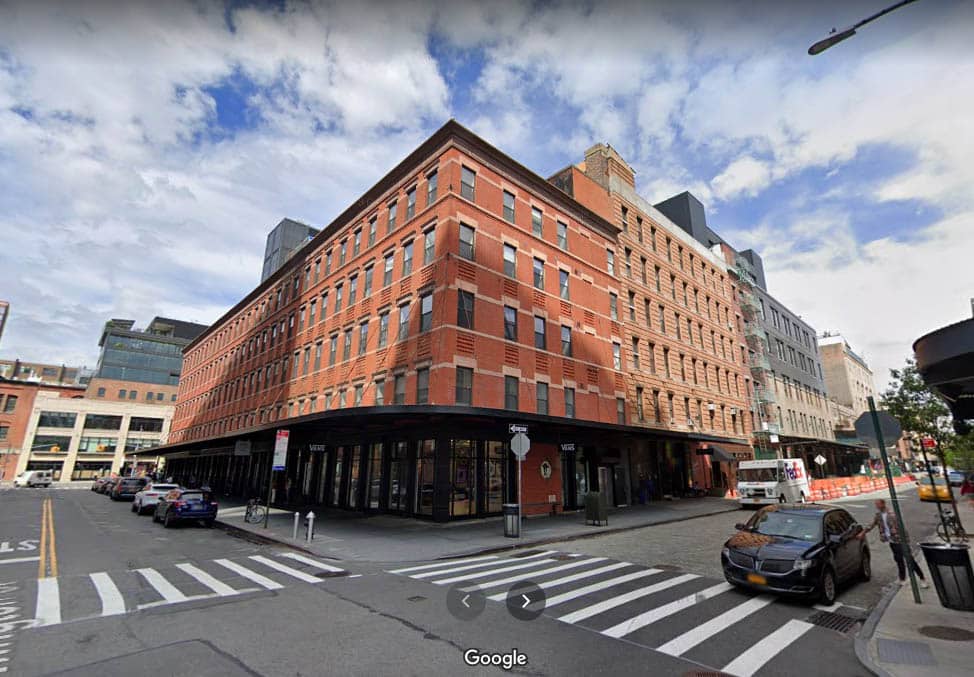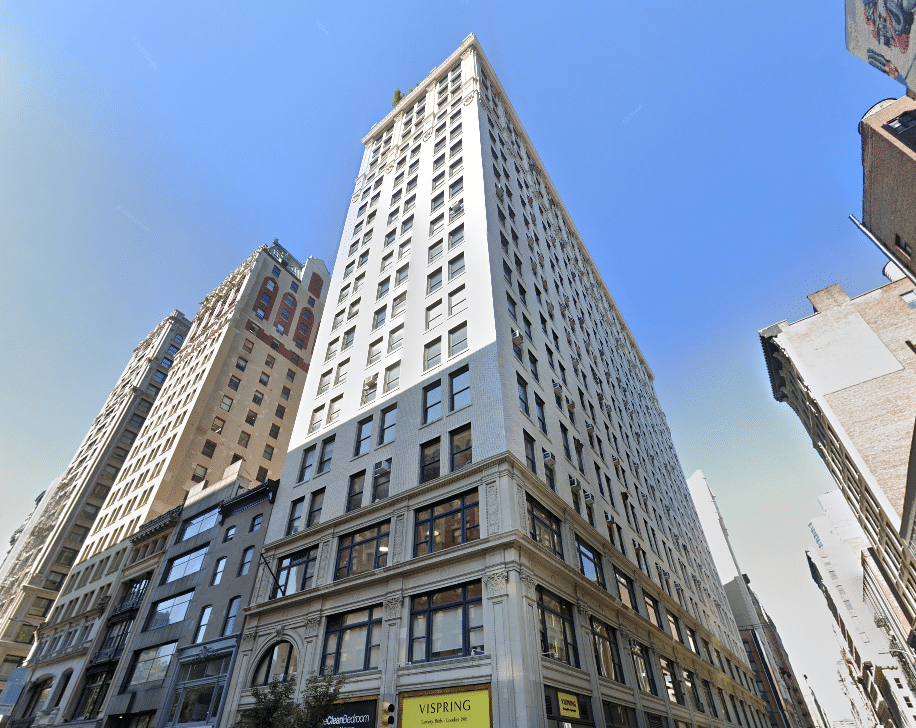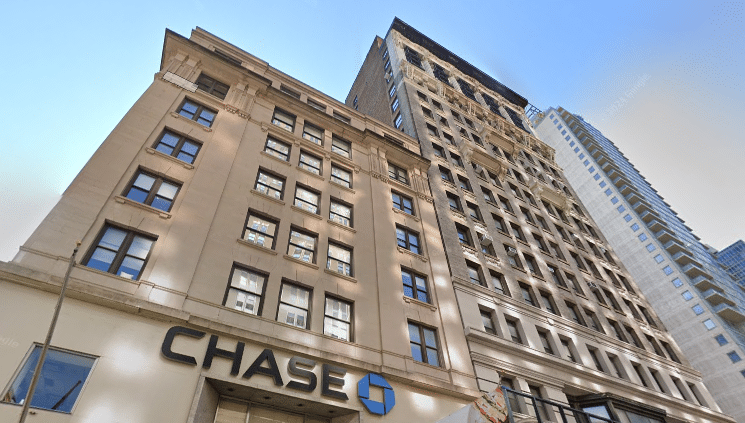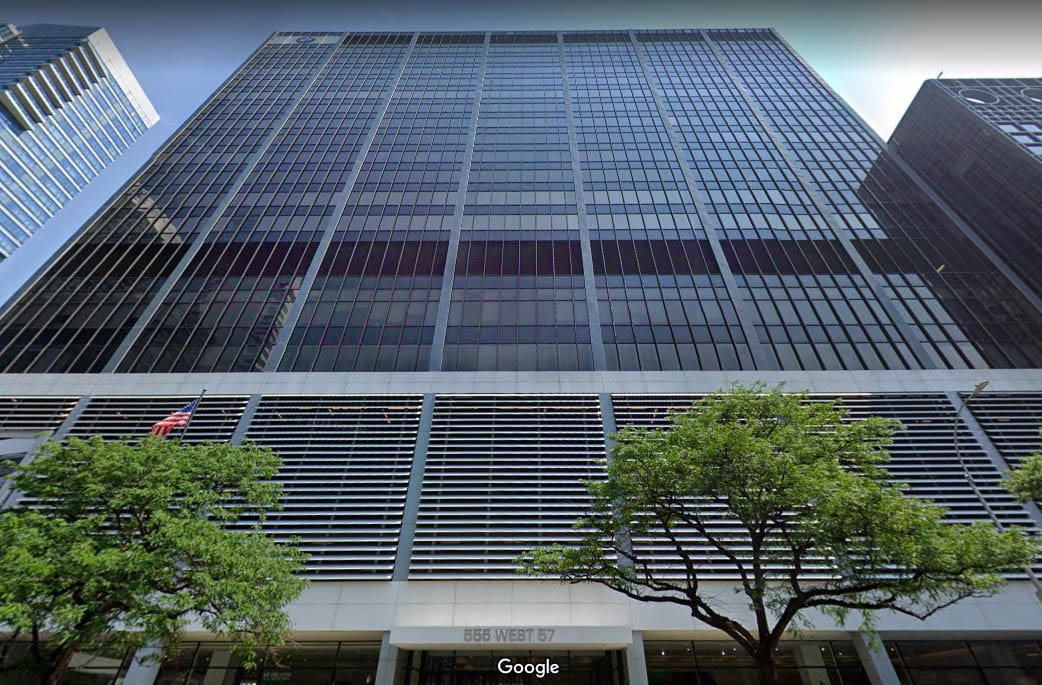Picture this: You’re holding a hot cup of coffee, ready to start your day, but instead, you’re stuck watching the office elevator slowly stop on every floor. Then, somebody bumps into you while waiting for that same elevator. You spill your coffee on your suit, and you’re stuck waiting another 5 minutes for the elevator, smelling like Starbucks. Outside of a traffic jam, this is every professional’s worst nightmare, especially when you’re late for a meeting or trying to beat the morning rush.
Elevators might just seem like a simple way to skip the stairs, but think about this: some can zoom you up 40 stories in less than 40 seconds! It’s pretty amazing technology, and it’s something you really appreciate when you’re stuck in the above scenario in a skyscraper like the Empire State Building.
So, when you’re checking out office spaces in New York City, don’t underestimate the importance of a good elevator. An old, slow lift in a quaint side street loft might leave you cooling your heels while the latest tech in a high-rise gets you to your floor in a flash. That’s why, in this article, we explore the latest elevator technologies—focusing on speed and ease. We’ll highlight the key features that matter and why they’re crucial when searching for your ideal office space. After all, who wants to waste time waiting around when you could already be up there getting work done?
The Critical Role of Elevators for New York City Tenants
Elevators in your New York City office building might seem like a minor detail, but they play a huge role. Think of it this way: without high speed elevators what’s the point of skyscrapers? They would be completely impractical with the creaky elevators of yesteryear.
Office Elevators: The Unsung Heroes of Tenant Satisfaction
Think about the last time you had to wait for an elevator in a busy office building. Frustrating, right? If you’re in a high-rise, smooth and fast elevators can truly make or break your mood at work and get you where you need to be when you need to be there.
Modern elevators that sip rather than gulp power not only reduce a building’s carbon footprint but can also lower energy bills. Moreover, technology upgrades make these elevators safer and last longer, over 30 years compared to the usual 20. Think less hassle with repairs and more consistent service. Plus, let’s be honest: a modern office elevator cab makes a building feel more polished and high-class.
You Don’t Want to Settle for Yesterday’s Office Elevators
Who wants to work in a building with antiquated elevators? Today’s tenants expect smart, efficient, fast elevators that match their high-tech lifestyles. We’ve moved from the days of manually operated lifts to elevators that know where you’re heading before you even press a button. This evolution from old-school to high-tech means fewer unexpected repairs and smoother rides, which everybody appreciates on their way to work.
Imagine walking into an elevator that doesn’t need a button to know your floor because it syncs with your smartphone or responds to your voice. That’s not just convenient; it’s how modern buildings meet tech-savvy tenants’ demands. These elevators remember your preferences and adjust their operations based on real-time data, like predicting when and where most people will need a lift. They’re part of a smarter, cleaner, and more efficient building experience. Plus, with features that save energy and reduce costs—like regenerative drives that use 50% less energy—these elevators are not just moving people faster; they’re moving with the future.
Elevators Just Got Smarter: Why AI and IoT Matter to Your Daily Ride
Did you know the elevator industry sees over 24 million breakdowns a year, leading to a whopping 190 million hours of downtime? That’s a lot of time spent waiting or taking the stairs. But thanks to advancements in Artificial Intelligence (AI) and the Internet of Things (IoT), we’re on the brink of a major shift. These technologies are turning old-school lifts into smart elevators that minimize disruptions and make your ride smoother and safer.
Imagine an elevator that predicts its own breakdowns before they happen, reducing those frustrating out-of-service signs and costly repairs, which globally add up to about $200 billion a year. That’s what AI and IoT are starting to do right now. These elevators can analyze data in real time, optimizing everything from how fast they get you to your floor to how they respond in emergencies. Think shorter waits, less downtime, and more peace of mind knowing you’re in a system that’s not only faster but smarter and more secure. With less than 1% of the world’s 16+ million elevators currently using these smart solutions, the future of how we move up and down is just starting to ascend.
Sustainable and Energy-Efficient Elevators
Sustainability is a big deal these days, and it’s even changing how elevators work. Modern elevators are going green with new features and technologies designed to save energy and be more eco-friendly.
Going Up the Green Way: How Elevators Are Powering Sustainability
Who knew that the elevator you ride could be a key player in making buildings greener? Modern elevators are stepping up, using high-tech solutions to cut down on energy use and reduce environmental footprints. Regenerative drive technology is a game-changer—it captures the energy an elevator creates as it descends and turns it into electricity. It’s quite easy to quantify the benefits; it can save up to 35% of power compared to older models. And since elevators can use between 2% and 10% of a building’s energy, these savings add up fast, making a big difference in a building’s operating costs and sustainability.
Green elevators use sustainable materials like bamboo, recycled steel, and eco-friendly paints. At the same time, advanced control systems predict and adapt to passenger traffic, reducing waste and improving energy efficiency. Beyond just moving people efficiently, these systems help buildings meet stricter environmental standards, reducing energy consumption by up to 50%. Think about this all the next time you ride an elevator.
Powering Up Efficiency: Office Elevator Innovations That Light the Way
Have you ever thought about how much energy an elevator uses? Modern elevators are becoming energy-saving champions with innovations like LED lighting, auto-standby modes, and efficient motors. These upgrades are essential for cutting down energy use, which can be substantial. For example, switching old lights to LEDs in elevators can slash energy consumption by 45%, providing brighter, cleaner light for less money. The Empire State Building is a shining example of this. Even though it was built in 1930, it’s now one of the most energy-efficient buildings in the world. By adopting such technologies, it cut its carbon emissions by 50%.
Moreover, elevators today smartly shift into standby mode when not actively in use, drastically reducing energy usage when buildings are empty, like nights and weekends. Visualize an elevator smart enough to nap, saving up to 80% of the energy it would otherwise use. Further tying things together, the shift to gearless motor technology and modern motors enhances the elevator’s efficiency even more and reduces the overall energy footprint.
The Importance of Freight Elevators
If you run a showroom or ship out products, freight elevators are a total game-changer. Imagine this: a big shipment arrives and needs to go from the stockroom to the showroom floor, stat. Instead of huffing and puffing up countless stairs, an automated freight elevator zips it up – like having your very own robotic delivery driver at your beck and call. No more wasted time or backbreaking labor lugging heavy boxes. Just load it up and let the elevator do the hard work for you, while you keep your business operations running smoothly and efficiently.
Freight Elevators: The Heavy Lifters of Business Success
Running a business is no easy feat – you’re constantly moving products, inventory, and shipments around. That’s where freight elevators come in. These powerhouse lifts can haul up to 20,000 pounds at once – we’re talking three elephants’ worth of goods or pallets in one go!
Luckily, many businesses in iconic NYC neighborhoods like Chelsea, Tribeca, SoHo, Flatiron District and the Garment District are housed in former industrial buildings. Back in their manufacturing heyday, these sturdy structures were built with heavy-duty freight elevators to easily move equipment and goods between floors. Now reimagined as prime commercial spaces, these elevators give modern businesses a major leg up.
However, freight elevators aren’t just brute strength – they’re customizable too. Adjustable shelving lets you neatly stack products, while durable floors can handle even the heaviest loads without a dent. Plus, safety features like sensor doors protect your team and cargo. These elevators seamlessly transport everything from incoming inventory to outgoing shipments between floors. No wonder they boost productivity by up to 40%!
Office Elevators That Work as Hard as You Do: The Power of Automation
Imagine stepping into your building and knowing the freight elevators are already two steps ahead, handling the heavy lifting. That’s the reality with automated freight elevators. They’ve transformed from machines into smart systems, anticipating busy times and managing themselves efficiently. For you, this means no delays in getting your products or supplies where they need to go, even during the peak hours of your business operations.
These elevators can also enhance how you work. They adjust their energy use to be as lean as possible—saving costs and supporting sustainability. Plus, with built-in sensors, they can detect issues early, preventing downtime that could disrupt your day. For your business in a commercial space, automated freight elevators are less about logistics and more about giving you peace of mind so you can focus on what matters—growing your business.
Choosing the Right Building: What to Look for in Office Elevator Tech
It’s easy to get caught up in location and layout when searching for the perfect office space in New York City. But don’t overlook the importance of modern elevator technology. Efficient, reliable elevators can significantly impact your daily operations and employee satisfaction. Here’s what to keep an eye out for when evaluating a building’s elevators:
- Regular Maintenance: Check for a building that promises and proves regular maintenance of its elevators. A well-maintained office elevator means fewer unexpected breakdowns and delays, ensuring smooth day-to-day operations.
- Smart Technology Adoption: Look for buildings that utilize AI and IoT for predictive maintenance. These technologies help anticipate and fix problems before they lead to downtime, keeping everything running smoothly.
- Energy Efficiency: Opt for buildings with energy-efficient elevator systems. They reduce the building’s environmental impact and help keep utility costs down, which can be a boon for managing your operational budget.
- Advanced Security Features: Prioritize buildings with advanced security features like biometric access controls. It will add a layer of security and can be crucial depending on the nature of your business.
- Future-Ready Infrastructure: Choose a building that stays updated with the latest elevator technology. Investing in its infrastructure is a sign of good management and ensures that you won’t face obsolescence anytime soon.
Final Words About Office Elevators
Think of elevators as the pulse of your office building—they’re not just about getting from point A to point B. A quick, quiet elevator ride can be a calm moment in a busy day, while a slow or bumpy one can be a constant source of frustration. As you search for your next office space, consider the elevators as a reflection of how the building is run. Are they modern and well-cared-for? It shows management values efficiency and tenant comfort. So, take a good look at those elevators—they might just tell you everything you need to know about your potential new office home.
